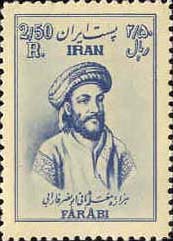Postage stamps and postal history of Iran on:
[Wikipedia]
[Google]
[Amazon]

 This is a survey of the
This is a survey of the
Iran Philatelic Study Circle
*http://aryaphilatelic.com/ *https://www.stampsoftheworld.co.uk/wiki/Iran {{PostalhistoryAsia Postal system of Iran Philately of Iran

 This is a survey of the
This is a survey of the postage stamps
A postage stamp is a small piece of paper issued by a post office, postal administration, or other authorized vendors to customers who pay postage (the cost involved in moving, insuring, or registering mail), who then affix the stamp to the f ...
and postal history of Iran
Iran, officially the Islamic Republic of Iran, and also called Persia, is a country located in Western Asia. It is bordered by Iraq and Turkey to the west, by Azerbaijan and Armenia to the northwest, by the Caspian Sea and Turkmeni ...
.
Pre-stamp era
In the pre-stamp era an ancient system of couriers operated throughout the Persian empire. Rossiter, Stuart & John Flower. ''The Stamp Atlas''. London: Macdonald, 1986, p.230. At a very early stage, these couriers used the ancient route from Babylon to Kermanshah, up to Hamadan—the classic Ecbatana—touching Tsagros in transit. This royal route changed in the course of time. According to ancient sources like Herodotus and Xenophon, Cyrus, King of Persia paid close attention to the communication network. From Xenophon we learn that Cyrus had stations and stables built to facilitate the couriers' missions and their efficient delivery of messages from the central power to the provinces. It was not a postal service as we know it today and it was not accessible to everyone.Indian postal agencies
In 1864 British colonial post offices using India's postage stamps were opened inMuscat
Muscat ( ar, مَسْقَط, ) is the capital and most populated city in Oman. It is the seat of the Governorate of Muscat. According to the National Centre for Statistics and Information (NCSI), the total population of Muscat Governorate was ...
and Bushire
Bushehr, Booshehr or Bushire ( fa, بوشهر ; also romanised as ''Būshehr'', ''Bouchehr'', ''Buschir'' and ''Busehr''), also known as Bandar Bushehr ( fa, ; also romanised as ''Bandar Būshehr'' and ''Bandar-e Būshehr''), previously Antioc ...
. These two postal outlets proved very successful and in 1867, Anglo-Indian post offices were opened in Bandar Abbas
Bandar Abbas or Bandar-e ‘Abbās ( fa, , , ), is a port city and capital of Hormozgān Province on the southern coast of Iran, on the Persian Gulf. The city occupies a strategic position on the narrow Strait of Hormuz (just across from Musand ...
, and Linga
A lingam ( sa, लिङ्ग , lit. "sign, symbol or mark"), sometimes referred to as linga or Shiva linga, is an abstract or aniconic representation of the Hindu god Shiva in Shaivism. It is typically the primary ''murti'' or devotional ...
. In the course of time a total of 13 Indian Post Offices operated in Iran. Following a 1922 agreement between India and Iran, on 30 March 1923 all Indian postal facilities in Iran were closed, except for two exchange bureaux in Duzdab and Mirjawa that continued to function for a few more years.
Russian post offices
Russian post offices operated in 1908-18 in northern Persia using stamps of Russia.First stamps
The modern era of postal service in Iran started in 1851 with a postal reform that had no immediate effects. The success of the Anglo-Indian postal operations combined with the positive reports about postal reforms in Europe and throughout the British Empire generated a renewed interest about postal communications and telegraphy in Naser al-Din, the Shah who reigned from 1848 to 1896. In 1865 he sent a delegation to Paris to liaise with the French Ministry of Posts & Telecommunications. The news of the Iranian mission got around and a private businessman by the name of A.M. Riester submitted essays for Iranian stamps featuring a lion and a rising sun behind it, set in an oval inner frame, part of an ornamentally rich frame. Months went by and Riester decided to contact Teheran, but he was chided for taking the liberty of using national symbols for unsolicited stamps. Meanwhile, the Iranian mission had opted for essays featuring a similar design prepared by Albert Barre. These essays caught the attention of top bureaucrats and eventually that of the Shah; as a result, in 1868 imperforate stamps with basically the same design of the Barre essays were printed in Teheran in quantities varying from 3,000 to 8,000 and issued for postal use in four denominations: 1 shahi violet; 2 shais green. 4 shais blue; and 8 shais red. They have been nicknamed the Bagheri stamps, possibly in reference to the person who printed or designed them. There was no hand-stamp or date-stamp in use to cancel these stamps and their circulation and use was relatively modest. In fact, not many letters are recorded, and because of the lack of any cancelling device, it is rather problematic to determine their genuine postal use simply because it is easy to exponentially increase the value of an un-cancelled letter by just adding an adhesive or two on to it.See also
*Iran Post
Iran Post is the government-owned and operated corporation responsible for providing postal services in Iran. Iran Post transports about 700 thousand parcels a day and connects some 29,000 destinations while it employs more than 16,000 people.
Ac ...
* Postage stamps of Bushire under British occupation
References
Further reading
*''Iran Philatelic Study Circle Bulletin'' *Migliavacca, Giorgio, ''A Concise Postal History of Persia'' pp. 48, 1986 - St. Thomas VI 00801-0007 *Earee, R.B. "Persia, Peru, Philippines Forgeries" pp. 24, 2011 reprint by Giorgio Migliavacca - St. Thomas VI 00801-0007External links
*https://web.archive.org/web/20100806082348/http://www.persi.com/Galleries/Gallery.htmIran Philatelic Study Circle
*http://aryaphilatelic.com/ *https://www.stampsoftheworld.co.uk/wiki/Iran {{PostalhistoryAsia Postal system of Iran Philately of Iran